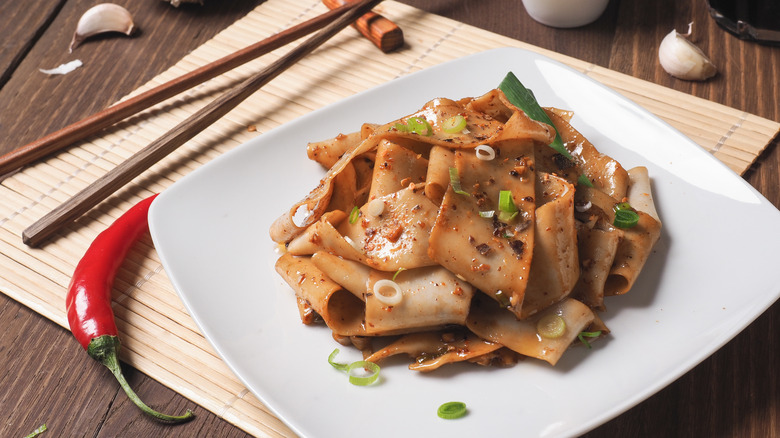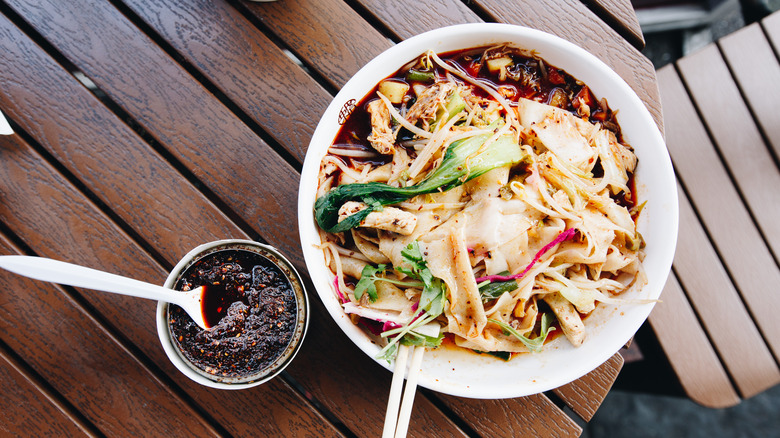This Is Where Biang Biang Noodles' Name Comes From
For a dish with a name that technically doesn't exist, biang biang noodles sure are popular these days (via BBC). Also known as belt noodles due to how long and wide they are, biang biang noodles are hand-pulled with a slapping technique that creates a chewy consistency ideal for soaking up the rest of the dish's flavors, the BBC goes on to explain. These seasonings typically include garlic, Sichuan peppercorns, cumin, and chili (via Taste Atlas).
Popular in the Shaanxi province of China and considered to be one of the "eight strange wonders" of the province, biang biang noodles were originally eaten by poor people in the countryside, though they have since gone mainstream (via Visit Beijing). According to the BBC, some of that popularity is thanks to fans on social media who are fascinated with the biang character, which can't be found in the dictionary. This makes it difficult to discuss its origins; however, there are several popular theories.
Origins of the biang biang name
One tale involves a scholar in the Qin dynasty, who offered to create a character as payment for his bowl of biang biang noodles, while another has a noodle shop owner making up the character (via Mental Floss). Others consider the biang character an onomatopoeia, that is, a character that evokes the sound of the word in question. In this case, biang could refer to the sound of the dough hitting the counter as the noodles are being stretched and made, or the sound made when eating the noodles (via China Easy).
Biang is also considered one of the most complex characters in Chinese, comprising 57 strokes (or depending on who you ask, 58 or even 62 strokes, according to Visit Beijing). Don't try to type biang out on a computer or a smartphone, as you won't be able to, warns TutorMing. But you can find the character on menus in restaurants throughout the Shaanxi province, and these days, in Chinese restaurants from New York to London. There are also several recipes online, including from Martha Stewart and the Rachael Ray Show. And yes, they do stress that you need to slap the dough as you make the noodles.

